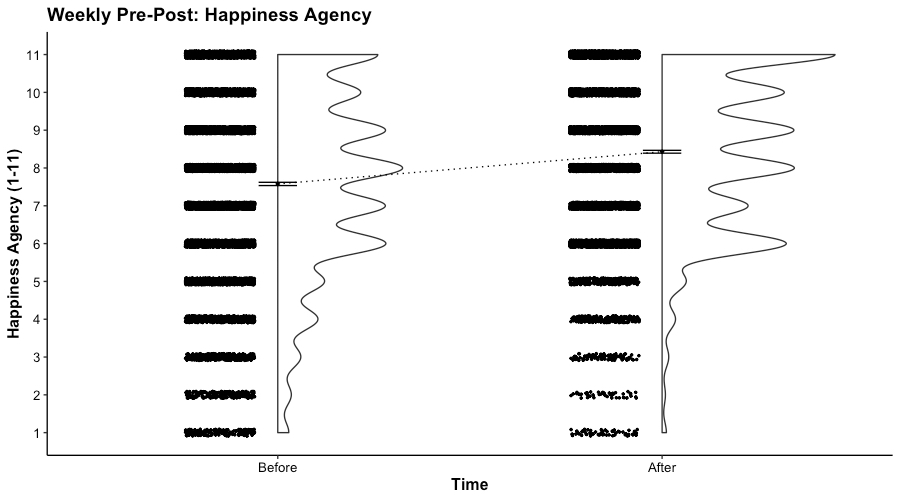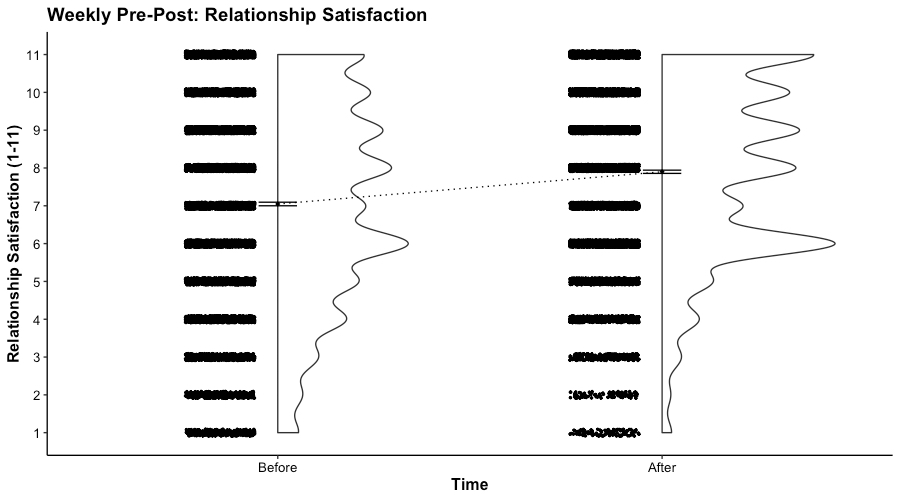Life can be challenging. Amid these challenges, it can be difficult to focus on our own well-being. But what if doing brief and simple exercises each day could gradually build up your potential for happiness?
That’s the question we tried to answer with Big JOY, an interactive, web-based program that invites anyone interested to try a series of micro-acts for enhancing joy, one each day for one week. Big JOY also enables people to log their daily activities and experiences and to measure their impact on well-being.
The micro-acts are inspired by the documentary Mission: JOY: Finding Happiness in Troubled Times, which tells the story of the deep friendship between the Dalai Lama and Archbishop Desmond Tutu—but they are also supported by scientific research. The Greater Good Science Center built Big JOY to offer people an actionable platform for increasing happiness within themselves, within each other, and worldwide.
Big Joy also has a “citizen science” goal: to analyze which micro-acts bring the most benefit to whom, using data from a large, global, and diverse audience. This discovery could help Big JOY guide people toward those micro-acts that promise to work best for them, given who they are, where they are from, and what is going on in their lives.
On the first day of Big JOY, participants take an onboarding survey about their emotional well-being, emotions, attitudes, and social tendencies. Then, for the next seven days, they’re asked to engage in one of the following micro-acts:
- Do something kind: Think of people you might see today and list one thing you could do to brighten their day.
- Tune in to what matters: Rank important personal values such as kindness, humility, and accountability and write about how they appear in your life.
- Make a gratitude list: Think, reflect, and list anything you feel grateful about in your life.
- Dwell in awe: Watch an awe-inspiring video, like the world’s natural wonders.
- Celebrate another’s joy: Talk to someone today and ask them about a story that made them happy.
- Shift your perspective: Recall a moment when you felt upset and frustrated. Think and write three positive things about that experience.
- Be a force of good: Listed to an audio-guided reflection on how you inherently contribute goodness into the world.
Each day, participants log their micro-act and answer questions about how it felt to do it. At the end of the week, they take a closing survey to re-measure their emotional well-being, emotions, attitudes, and social connections. Big JOY also generates a personalized report at this point to show each person what happened as they progressed through the week.
So far, over 22,000 people from over 22 countries have participated in Big JOY. Around 11,000 completed all the surveys before and after engaging in the seven-day Big JOY experience. Here is what we found so far!

1. Emotional well-being jumped 26%. Each dot in the graph above represents one person’s score for overall emotional well-being and is a composite of their self-rated life satisfaction, happy feelings, and meaning in life. From before (left column) to after (right column) Big JOY, most of the dots move up, which indicates a rising score—which, analyzed collectively, came to an increase of 26% from before to after Big JOY.

2. Positive emotions increased by 23%. Participants self-rated positive emotions—hope, optimism, wonder, amazement, amusement, and silliness. Those feelings rose by 23% after a week of Big JOY.

3. They felt more empowered to become happier. From before to after Big JOY, participants were 27% more likely to agree with this statement: “I have felt able to impact, influence, or play an active role in how happy I generally feel.” We also saw a 34% increase in agreement with the idea that “I am in control, on top of things, like I have been coping well.”

4. Relationships improved. After a week of Big JOY, 30% more people agreed with
this statement: “I have felt content with my friendships and relationships.”

5. Better sleep. Finally, people reported a 12% increase in overall sleep quality from before to after Big JOY—which research has found is a major indicator of well-being.
Our preliminary analysis of changes in how people respond to survey questions before and after engaging with Big JOY suggests that small, daily activities can lead to meaningful increases in emotional well-being, positive emotions, agency over happiness and coping, and social connection.
While very encouraging, there are some limitations to interpreting the results shared above. Most importantly, the people giving these responses came to Big JOY voluntarily, which usually means that they were interested in and enthusiastic about the topic, which could bias them to report favorably on its impact. People whose responses are included in this analysis did not receive any material incentive or reward for participating in Big JOY, which suggests that they were personally motivated to complete all seven days, which is a sign of enthusiasm that can make claims about desirable outcomes murky. Were people saying they felt happier, more capable, and connected because they liked the experience or because doing the micro-acts causes change? We can’t answer this.

Continuing our work with the Big JOY data, we’ll be comparing the impact of different micro-acts to each other and examining whether the effects of Big JOY differ for different people based on personal characteristics, life experiences, and circumstances—that’s the citizen science part of the project. Further, to be able to claim that Big JOY causes the increase in people’s well-being, emotions, attitudes, and social tendencies, we will need to build and test the impact of an active control program, where people do seven days of micro-acts that do not purport to increase joy, and then answer all the same questions that are in Big JOY. By comparing those patterns of change to the ones observed here, we could make more substantial claims about the effectiveness of Big JOY for everyone.
In the meantime, Big JOY is freely available for anyone to try. Want to help us learn more about what works best for whom? See if these brief, daily micro-acts can also improve your emotional well-being.







Comments